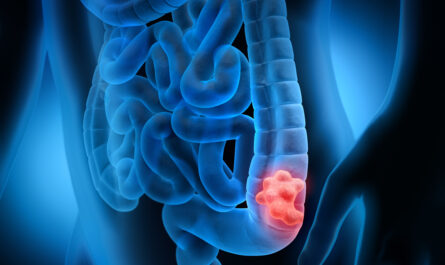Research conducted by UCSF has revealed that signals related to the taste of food are the first to control our eating pace, much before the well-known stretch signals from the gut. This discovery provides valuable insights into appetite control and how weight loss drugs like Ozempic may work.
The mechanism behind the signals that inform our brain about feeling full after a meal is already well-established. Weight loss drugs such as Ozempic and Wegovy utilize these signaling pathways. However, the recent study conducted by UCSF researchers focused on exploring other mechanisms that regulate eating habits. Surprisingly, they found that signals related to the taste of food, which are sent from the mouth to the brain, are the first to control our food intake.
The caudal nucleus of the solitary tract (cNTS), a series of sensory nuclei deep within the brainstem, is the first location in the brain where various meal-related signals are sensed and integrated. Although studies on animals have consistently shown that the cNTS contains neurons activated by meal-related signals, they were unable to capture the sensory and motor feedback that occurs during natural ingestion in awake and active animals.
The researchers studied the action of prolactin-released hormone (PRLH) neurons, a specific cell type in the cNTS, which inhibit feeding when stimulated. They utilized mice with Prlh gene inserted (Prlh knock-in mice) and used optogenetic stimulation to control the activity of the PRLH neurons. The researchers found that when mice orally consumed food, the PRLH neurons were activated within seconds, but when the same substances were infused directly into the stomach, the activation occurred after tens of minutes.
Moreover, the researchers discovered that taste perception affects the activation of PRLH neurons. The majority of these neurons were activated when mice consumed sweet or fatty solutions, indicating that they are not specialized to respond to a single taste. These findings suggested that the taste of food rapidly modulates the palatability, thereby influencing the pace of food ingestion. This response plays a crucial role in preventing gastrointestinal distress that may occur when food is eaten too quickly.
The researchers also compared the activity of PRLH neurons with another type of nerve cell called GCG neurons, which are involved in regulating satiety. GCG neurons are activated by ingestion and express the appetite-reducing hormone glucagon-like peptide 1 (GLP-1), which is mimicked by weight loss drugs like Ozempic. The researchers found that GCG neurons tracked cumulative food intake and were more sensitive to gastrointestinal feedback, responding primarily to gut stretch. Additionally, the activation of GCG neurons resulted in longer-lasting satiety compared to PRLH neurons.
The study’s findings indicate that sequential feedback signals from the mouth and the gut engage distinct circuits in the brainstem, which ultimately controls feeding behavior in the short and long term. These findings shed light on the intricate mechanisms involved in appetite control.
The researchers believe that this new understanding can pave the way for the development of weight loss regimens that optimize the interaction between these two sets of neurons, thereby addressing individual eating habits more effectively. This could lead to more personalized approaches to weight loss and better outcomes for individuals seeking to manage their weight.
*Note:
1. Source: Coherent Market Insights, Public sources, Desk research
2. We have leveraged AI tools to mine information and compile it




